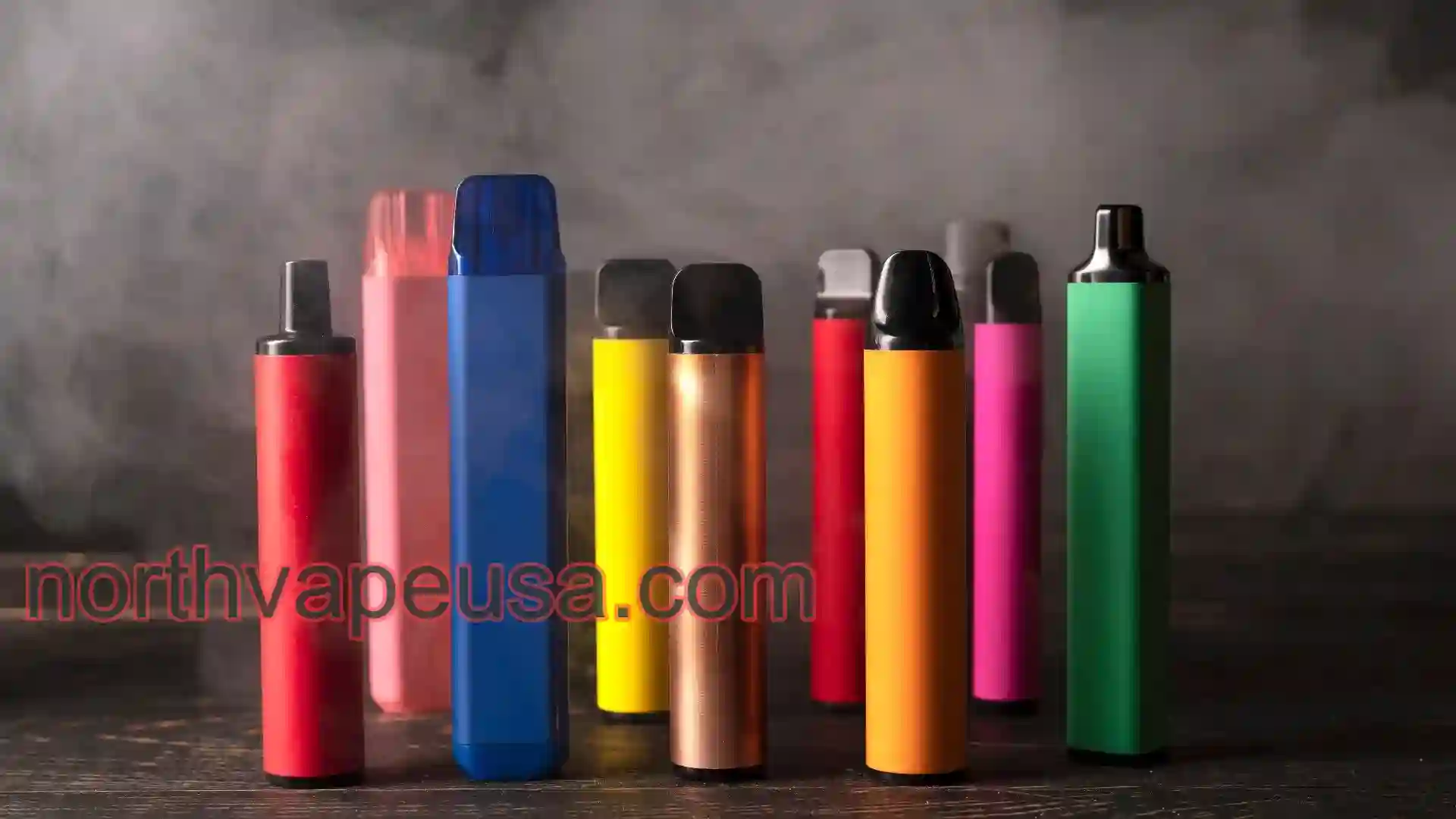Analysis of the Market Development Status and Future Trends of the Vape Industry in 2025
Analysis of the Development Status and Future Trends of the Vape Industry in 2025
Since the emergence of vapes in the early 2000s, the industry has rapidly developed and undergone several market transformations. With the growing global awareness of health and the increasing stringency of smoking bans, vapes have gradually been seen as an alternative to traditional cigarettes. However, the development of the vape market has not been without challenges.
As regulatory policies tighten across countries, consumer demands diversify, and technological innovations continue, the vape industry is in a constant state of change. As we move into 2025, the global vape industry is facing new market dynamics and development trends. This article will delve into the current status and future trends of the vape industry, focusing on the global market situation, regulatory policy changes, technological innovations and product upgrades, and market competition.

1. Global Market Status and Regional Differences
In 2025, the global vape market continues to exhibit significant regional differences. Variations in regulatory policies, consumer culture, and health awareness across different countries and regions contribute to the diverse performance of the vape market.
1.1 U.S. Market
The United States is a key part of the global vape market. According to industry data, the U.S. remains one of the major markets for vape consumption. Although the growth rate of vapes has slowed, the market still holds a significant share. The development of the vape market in the U.S. has been complex, starting with rapid growth, followed by increasing regulatory pressure, and eventually requiring companies to adjust their strategies in response to new policies. The competitive landscape has undergone significant changes.
The U.S. FDA (Food and Drug Administration) has recently intensified its regulation of vapes, particularly with strong measures to reduce youth access to vape products. The FDA has introduced stricter regulations requiring vape manufacturers to submit safety data for their products, while also taking action against illegal products. These regulatory measures have led to a greater focus on compliance and product safety in the market, with some small businesses facing the risk of exiting the market. Meanwhile, legal vape products have gradually gained a larger market share.

1.2 Western European Market
The Western European market has also seen notable changes, particularly as the UK and the EU impose stricter regulations on vapes. The UK, as a leader in the European vape market, has seen its market mature in recent years. However, the EU’s regulatory stance has undergone significant shifts, especially regarding bans on disposable vapes and restrictions on flavored vapes, which have started to impact the market structure.
The UK government has maintained a relatively lenient stance toward vapes as a smoking cessation tool. However, with regulatory adjustments, the industry now faces certain challenges. The EU's ban on disposable vapes and restrictions on certain flavors have led to a contraction in the market. It is expected that in the coming years, pod-based vapes may regain market share, replacing disposable products with long-lasting ones that focus more on safety and environmental concerns.
1.3 Asian Market
In Asia, the performance of the vape market varies significantly by region. In Japan and South Korea, heated tobacco products (HTPs) have continued to grow, as these markets have a strong consumer awareness of health. Major tobacco companies have heavily promoted these products, which are seen as a healthier alternative by reducing harmful substances compared to traditional cigarettes.
China, as the world’s largest vape manufacturer and exporter, faces a more restricted domestic market due to relatively stringent regulations. Nevertheless, Chinese companies continue to dominate international markets. While the domestic vape market in China is affected by policy uncertainties, the export market remains full of opportunities. However, the complex international trade environment and varying regulatory policies across countries present numerous challenges for Chinese vape companies as they expand into different markets.
2. Changes in Regulatory Policies and Their Impact
Regulatory policies are undoubtedly a key factor in shaping the development of the vape industry. By 2025, the regulatory frameworks in many major countries and regions are becoming increasingly strict, with many nations viewing vapes as a special consumer product and subjecting them to stringent regulations.
2.1 U.S. FDA's Stricter Regulations
In the United States, the FDA has been intensifying its regulation of vape products. In 2019, the FDA announced that it would tighten its review process for vape products, requiring manufacturers to submit detailed product information and safety data. Additionally, the FDA has ramped up efforts to combat youth vaping. With the FDA requiring vape companies to submit Pre-Market Tobacco Applications (PMTAs), many small businesses that failed to meet the standards were forced to exit the market. These regulatory changes have shifted the market towards compliant products.
2.2 EU and UK Policy Tightening
The EU and the UK have also implemented strict regulations on vapes. The UK government has tightened regulations on disposable vapes and flavored vapes to further standardize market practices. Notably, the EU's ban on certain vape products, especially flavored vapes, is seen as a measure to protect public health, as flavored vapes could attract younger users.
Some European countries have also introduced tax policies to increase the barriers to market entry for vape products. For example, certain countries have raised consumption taxes on vapes, aiming to reduce smoking rates, particularly among youth.
2.3 China’s Regulatory Oversight
China has progressively tightened its regulation of vapes. Starting in 2021, the Chinese government introduced strict controls, including a ban on online sales, advertising restrictions, and increased supervision over production and sales. By 2025, it is expected that China will further enhance its control over the vape market. The uncertainty of domestic policies will continue to be a critical challenge for the industry, particularly when it comes to export markets.
2.4 Global Tax Policy Adjustments
Some countries have started to implement higher tax rates on vape products to balance public health objectives with industry development. Raising taxes not only reduces consumer demand but also generates new sources of revenue for governments. This, in turn, pushes companies to invest more in compliant production and tax management to meet the demands of various markets.

3. Technological Innovation and Product Upgrades
Technological innovation is one of the key driving forces behind the development of the vape industry. As consumer demands for vape products increase, companies are focusing not only on flavor and smoke quality but also on technological innovations, product design, and user experience. With the growing popularity of terms like north vape near me and north vapes, consumers are increasingly searching for localized and personalized experiences when purchasing vape products. This shift is influencing how companies approach product distribution and customer engagement. By 2025, technological advancements in the vape industry will accelerate, driving product upgrades, market expansion, and more targeted services, including enhanced geographic availability and product variety tailored to specific consumer preferences.
3.1 New Atomization Technology
New atomization technology is critical for enhancing the vapor production and user experience of vape products. In 2025, many vape companies are adopting more advanced ceramic coil technology to improve heating efficiency and reduce harmful substance generation. This technology allows for better control of heating temperature, reducing the over-burning of nicotine and other ingredients, thereby improving smoke quality and lowering harmful substances inhaled by consumers.
3.2 Smart Vapes
With the development of the Internet of Things (IoT) and big data technology, smart vapes are gradually becoming a major trend in the market. Smart vapes not only provide the traditional smoking experience but can also connect to mobile apps, offering more personalized features. For example, functions like adjusting vapor density, temperature control, tracking smoking duration, and monitoring health data are expected to become standard features for future vape products. These features not only enhance the user experience but also help consumers better control their smoking behavior, potentially serving as an aid for smoking cessation.

3.3 Personalized Design and Diverse Flavors
Consumers’ demand for personalization and diversity continues to rise. In 2025, more vape manufacturers will offer customized designs and a wide variety of flavor options. For example, companies may create vape designs and e-liquid flavors tailored to the preferences of different consumer groups. By segmenting the market, businesses can cater to different age groups and consumer income levels, and product diversification will become a significant competitive advantage in the industry.
4. Changes in the Market Competition Landscape
By 2025, the market competition in the vape industry will become more complex. On one hand, traditional tobacco giants, with their strong brands, distribution channels, and financial advantages, will continue to hold a dominant position in the vape market. On the other hand, emerging vape companies are rising up with innovative technologies and product designs, gradually capturing market share.
4.1 Mergers and Acquisitions by Traditional Tobacco Giants
Traditional tobacco companies like British American Tobacco (BAT) and Philip Morris International (PMI) are expanding their share of the vape market through mergers and acquisitions. These companies leverage their powerful brand presence and distribution channels to create significant competitive barriers. As regulatory policies tighten, traditional tobacco giants are expected to use their global market resources to better respond to market challenges.
4.2 The Rise of Emerging Companies
Emerging vape companies, through breakthroughs in technology, product design, and marketing strategies, are gradually standing out in the market. These companies often possess strong flexibility and innovation, enabling them to quickly adjust their product strategies according to changes in consumer demand. Furthermore, with the ongoing consolidation of the global market, mergers and acquisitions within the industry will become more frequent, intensifying competition among firms.
4.3 Accelerating Market Consolidation
As the vape industry matures, market consolidation is accelerating. More small companies are merging or collaborating to form tighter competitive alliances. In the coming years, market competition will intensify, and mergers and acquisitions will become a regular occurrence within the industry.
Conclusion
In 2025, the vape industry is facing unprecedented opportunities and challenges. From regional differences in the global market to increasingly stringent regulatory policies, along with accelerating technological innovation and product upgrades, the competitive landscape in the vape industry is undergoing profound changes. For companies, ensuring compliance in a strict regulatory environment, enhancing product competitiveness through technological innovations, and seizing opportunities in a complex market will be the key to success in the future.

